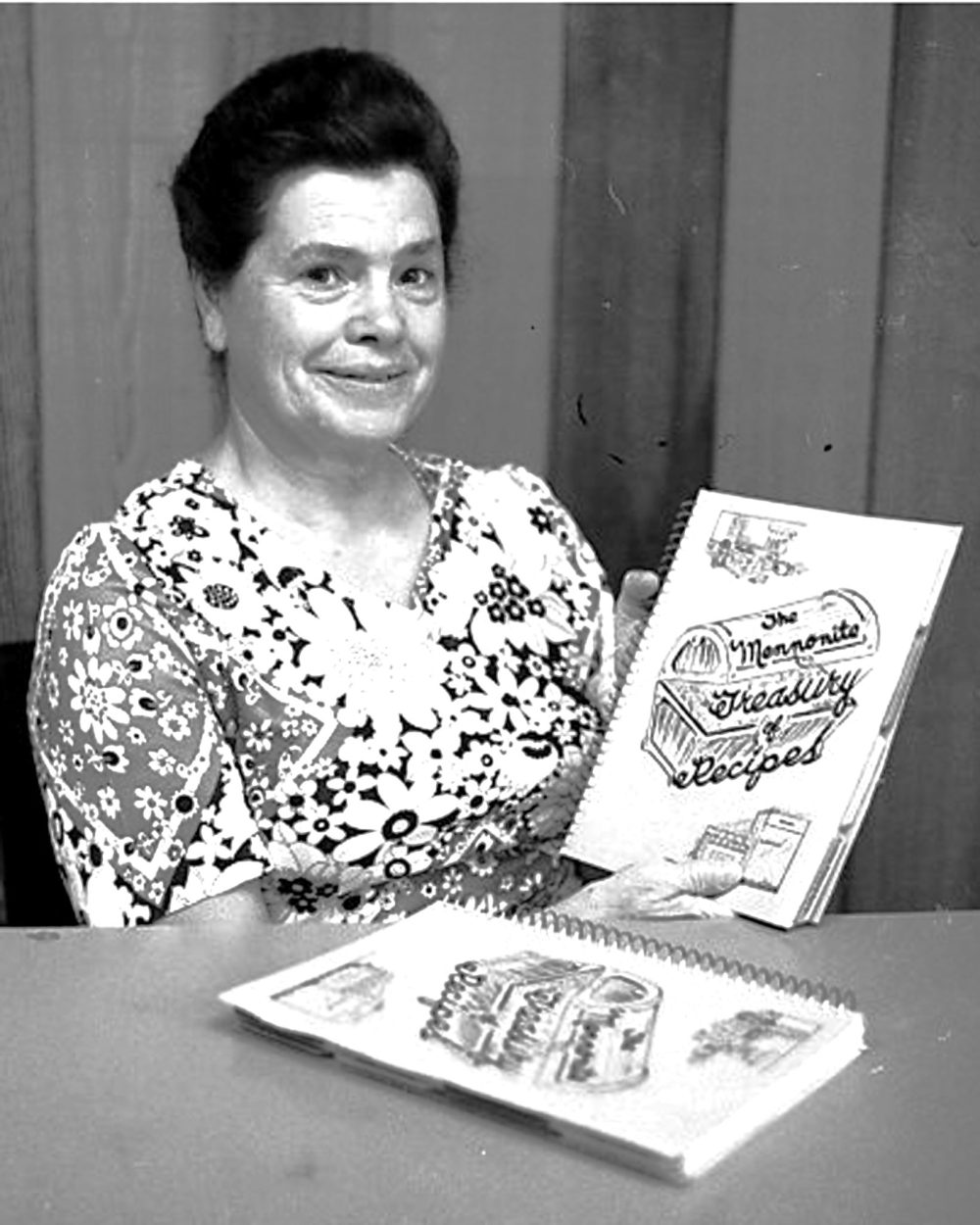COLUMN: Carillon Flashback August 16, 1973 – Mennonite cook book is Canadian bestseller
Advertisement
Hey there, time traveller!
This article was published 25/01/2024 (603 days ago), so information in it may no longer be current.
Wherever Mennonites are meeting, women are there cooking. Women’s groups from several Mennonite churches turned their talent into a most successful fundraiser with The Mennonite Treasury of Recipes, a cookbook containing favourite dishes as well as a special section on typically Mennonite foods.
In all, the cookbook contains over 1,000 recipes, contributed by people from all over Canada. Recipes bear the mark of various ethnic groups besides the Mennonites, who themselves borrowed recipes from the countries in which they lived, especially from Ukraine.
One section contains menus and recipes for large gatherings, which was what inspired the cookbook project in the first place.

The idea of the cookbook was born at the Canadian Mennonite Conference, held in Steinbach in 1960, when women’s groups from different communities and the Steinbach Mennonite and Bergthaler churches were preparing and serving meals for the delegates. Food convenor, Mrs D.D. Warkentin, told the women to write down the recipes and amounts of each recipe used, in case they had to cook for such a big crowd again.
At first, Warkentin’s committee thought of publishing a sheet of favorite recipes especially for large gatherings, but then got the idea of compiling a cookbook of favorite Mennonite dishes.
Included are such recipes as “Leber pastete” and “Berliner Pflaster” reflecting German culture, and Danish pastry, Dutch red eggs, Cake of Genoa, Napoleon Plaetzchen and many other recipes from European countries, where Mennonites lived.
Then there are recipes with unusual names, like “Shoo-Fly Pie”, “Flapper Pie”, the encouraging “Never Fail Cake”, “Biblical Cake” and “My Best Chow Chow”, making the book interesting reading besides a source of inspiration for cooks.
Notes on how to cook meat and rules for canning and preserving, as well as hints on such varied subjects as cleaning the iron and removing odors, help out the apprentice homemaker.
Mrs. Anna Rosenfeld, who was instrumental in putting together The Mennonite Treasury of Recipes, describes the initial reaction of the church women’s group to the cookbook idea as being lukewarm at best.
“Yes, yes, it would be nice, was the general consensus, but nobody really thought we would go ahead, as we he had no money.”
Undaunted, Rosenfeld went to Derksen Printers to see what her brother Eugene thought of this venture. Derksen was very encouraging, saying he had always wanted to publish a good cookbook. He quoted prices for different sizes, and she left the office very discouraged.
“If you have ever had anything published, you will know exactly how I felt when I left his office. I knew we would never be able to publish a cookbook, and certainly not one with a thousand recipes.”
But the next morning, her brother told her to go ahead and collect the material for the book; Derksen Printers would print the book, even if it took the women five years to pay for it. “Eugene said they would print 3,000 copies, because it would be cheaper per copy than printing only a few.”
Hearing about the 3,000 books, one woman on the committee skeptically told Rosenfeld they would never be able to get rid of them and would be committed to a debt of nearly $4,000.
The committee wanted at least one “tried and tested” recipe from each member of every group, and after considerable asking, writing and begging, the recipes began to “dribble in” from several provinces.
The material was proofread twice at Derksen Printers and then the women went through the recipes twice more, but even after all this effort, some mistakes were missed, resulting, for instance, in a bizarre recipe calling for brown paper instead of brown sugar.
A cover was designed by Mrs Warkentin’s daughter, Anne Marie, and by December 3, 1961, the first books were ready for sale.
The book has now gone through its thirteenth printing. During the last dozen years, over 42,000 copies have been sold and Derksen Printers continues to print about 4,000 a year.
The Mennonite Treasury of Recipes has become the go-to standard for traditional Mennonite recipes for over 60 years and over one million copies have been sold worldwide. It continues to be printed at Derksen Printers.
– with files from Lydia Penner
